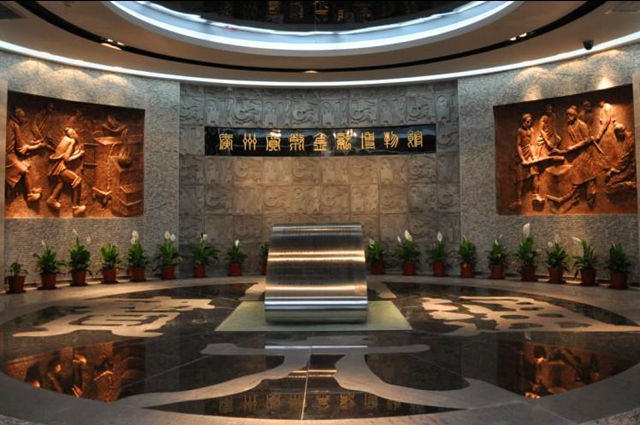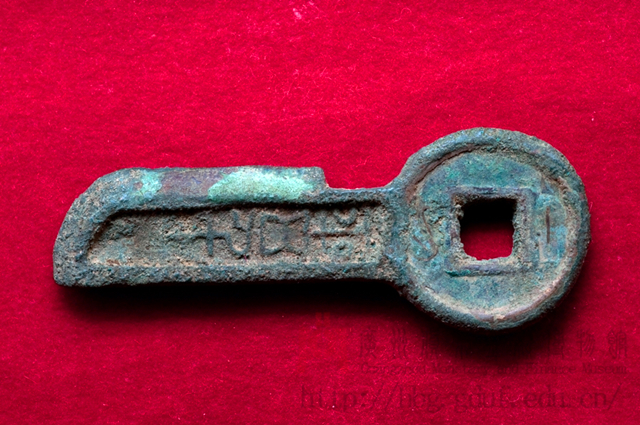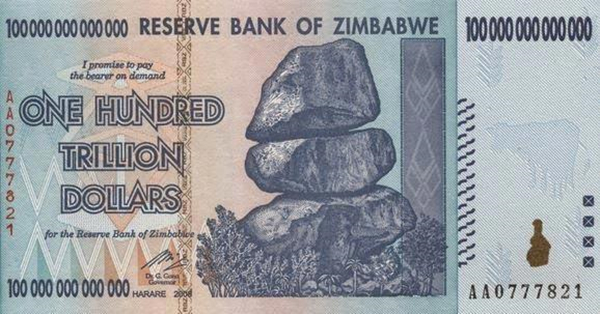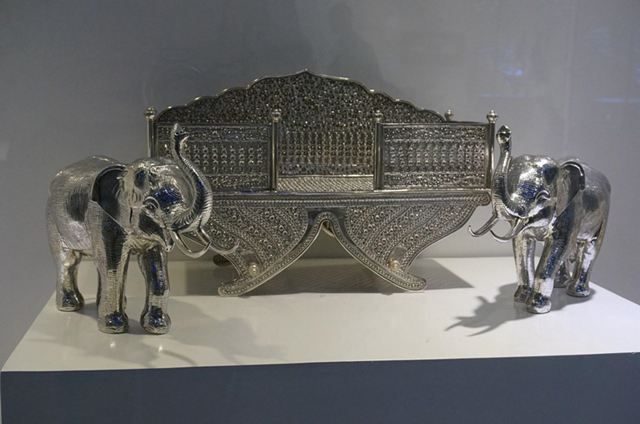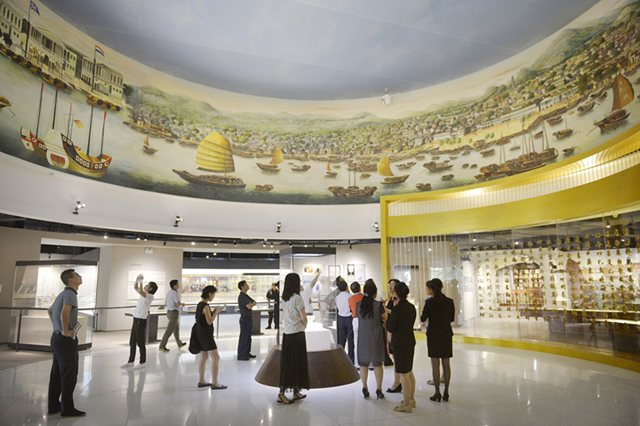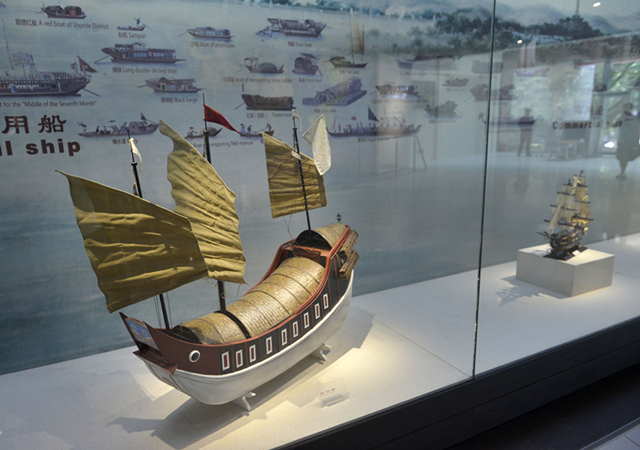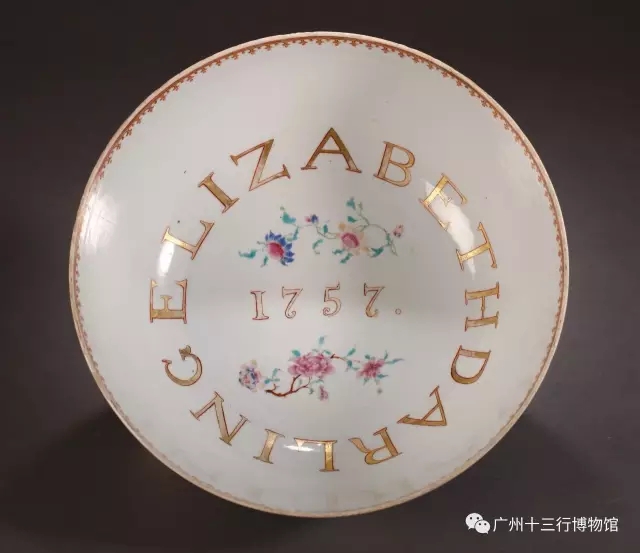How long have you been staying in Guangzhou? Do you know there is a place where you can see all kinds of banknotes in Guangzhou? Do you know there is a place full of gold and silver in Guangzhou? Do you know once the richest man in the world lived in Guangzhou? Do you know how the metro is built and operated in Guangzhou?
All these memories of Guangzhou with interesting stories have been treasured in the museums which you may haven’t got a chance to visit before. May 18 marks the International Museum Day. How about deepening your impression of Guangzhou via trips to the following quirky museums in the city?
Here comes the fast and the well-fixed in Guangzhou Monetary and Finance Museum, Guangzhou Siam Garden Silver Museum, Guangzhou Thirteen Hongs Museum, and Guangzhou Metro Museum.
Guangzhou Monetary and Finance Museum
A treasured place where “an inch of land values an inch of gold”
Guangzhou Monetary and Finance Museum is kind of low profile. It is situated in Guangdong University of Finance. As one of the rare currency museums in Guangdong, it houses more than 50,000 pieces of monetary and finance objects. It is your first choice to explore the wonderful world of currency.
In the museum, you can see ancient Chinese coinage, currency of the Republic of China, currency of the revolutionary base, Chinese currency, currency of China’s Hong Kong, Macao and Taiwan, currency of countries around the world, gold and silver commemorative coin, electronic currency, finance tickets, and so on. There is also shell money, knife money, three hole spade (san kong bu), copper coin, bank notes, shoe-shaped gold ingot, paper money and so on.
In the exhibition area of ancient currency, you can never miss this one: knife coin in the shape of a key (“一刀平五千”). It was issued by Wang Mang, a Han Dynasty official who seized the throne from the Liu family, founded the Xin Dynasty and ruled during 9–23 AD. Only a minimal number of such coins had been issued into circulation, so it is highly sought-after by collectors nowadays. A knife coin is divided into two parts: knife blade and knife handle. Because the lettering is filled with gold, so it is also called “gold-inlaid knife” (“金错刀”).
In the exhibition area of foreign currency, banknote of Zimbabwe attracts the most attention. Everybody knows that the largest denomination of renminbi is the 100 yuan note. However, the largest denomination in the world is the 100 000 000 000 000 banknote of Zimbabwean dollar. That’s right, 100 trillion Zimbabwean dollars. According to the commentator, the banknote looks intimidating, but considering the inflation, this banknote of tremendous denomination can only offer one or two loaves of bread.
In the exhibition hall of anti-counterfeit currency, all sorts of strange counterfeit banknotes are displayed. If you don’t identify carefully, you might not be able to recognize them. For the 100-yuan banknote of the 2005 series, several key points for how to detect a counterfeit note are listed in the exhibition hall.
Admission: Free only for team reservation; individual tourist should only come on free open day every month (May 18 is open for free)
Add.: 5th & 6th Floor of the library, Guangdong University of Finance, No. 527 Yingfu Road, Longdong, Tianhe District, Guangzhou (广州市天河区龙洞迎福路527号广东金融学院图书馆5、6楼)
Opening hours: 8:00 – 11:30 am, 2:00 – 4:30 pm, Monday – Friday (closed during summer and winter vacations)
Reservation: Through the website of the museum or fax 020-37216839 (only for group)
Guangzhou Siam Garden Silver Museum
Where silver and Thai style shines
The Silver Museum houses more than 300 pieces of silver jewelry and artworks, such as silver necklaces, silver bowls, silver chopsticks, silver phoenix, silver birds, silver elephants, silver ships, silver bottles, silver boxes and silver houses. All shine with dazzling brilliance.
There are six exhibition areas, featuring the origin of silver, the military, industrial, medicinal usage of silver and so on. In fact, the history of people discovering and using silver dates back to the ancient times. Starting from the Han Dynasty, silver ingot was used as standard coinage. The using history of silver jewelry and silverware can be traced back to the Warring States Period.
What’s more, Guangzhou Siam Garden is also a wonderful place for photographing. Walking around, you will encounter Thai style gardens and buildings. You will also hear Thailand’s pop songs in the garden from time to time.
Admission: Free
Add.: inside Guangzhou Siam Garden, Zhubao Town, Huadu District, Guangzhou (广州市花都区珠宝小镇曼古园内)
Transportation: 1. Enter Guangqing Expressway - Exist in Chini/Xinhua - Enter Fengshen Dadao - Enter Hongmian Dadao - Enter Yingbin Dadao - Reach Siam Garden.
2. Go to the Airport Expressway - Enter Yingbin Dadao (about 15 km).
Bus: Take Huadu Bus No.9 or Huadu Bus No.21 and leave at the Shitouji Station, then go straight to the Siam Garden.
Guangzhou Thirteen Hongs Museum
Everything you should know about the millennial commercial city
The reason why Guangzhou is one of the most important trading venues for Chinese and foreign merchandise on ancient Maritime Silk Road, is that a group of special merchants once operated the only foreign port, Guangzhou Thirteen Hongs, during the heyday of the Qing Dynasty. It was once called “the golden mountain and south bank of the emperor”. Merchants of the Thirteen Hongs were considered as the richest in the world, and their wealth was even envied by the government.
To earn about the history of Guangzhou, Guangzhou Thirteen Hongs Museum is the perfect place.
The 6,100-square-meter exhibition hall presents the development history of the Thirteen Hongs and houses about 1,600 pieces (sets) of cultural objects. In here, you can appreciate Kwon-glazed porcelain, tea, pith paintings, Cantonese embroidery, export fans, mahogany furniture, silverware, glass paintings, watercolor paintings, lacquerware and so on.
In the museum, each cultural relic has a story to tell. The most precious treasure of the museum is the big Kwon-glazed porcelain bowl with design of foreigners sailing home. It is a specially made souvenir for foreign ships when arriving in Guangzhou. In the center of the bowl, there is the year of the ship’s arrival, 1757, around which is the English words “Elizabeth Darling”. On the bowl, painting shows sailors meeting their families.
Admission: Free. Visitors can get the tickets in the ticket center with their valid certificates. Tickets would not be given out after4:00 pm every opening day.
Add.: Inside the Cultural Park, No.37 Xiti Er Road, Liwan District,Guangzhou (广州市荔湾区西堤二马路37号广州文化公园内)
Metro: Exit A/D, Cultural Park Station, Line 6
Bus: Cultural Park Stop, Bus No.31, 38, 57, 131B, 208, 209, 238, 281, 552; South Kangwang Road Station, Bus No.79, 79A, 114, 181, 226, 251, 288, 297, 521, 530;
Opening hours: 9:00 - 17:00 every day; The Museum is closed on Monday.
Guangzhou Metro Museum
Play games to experience how the metro is operated
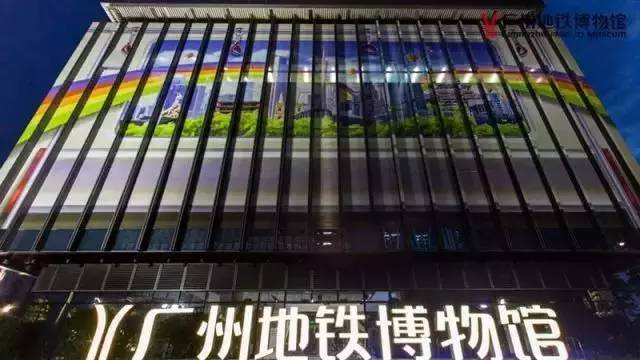
Do you know what happens after the last metro train finishes its shift every day? After work, where do the trains park? What is a shield tunneling machine? You can find the answers to these questions at Guangzhou Metro Museum.
Guangzhou Metro Museum opened its doors to the public last December, revealing splendid views and fantastic stories of the city’s metro system. It covers about 4,400 square meters, with 3600-square-meter exhibition area. It is the first metro museum in south China and the second one in China.
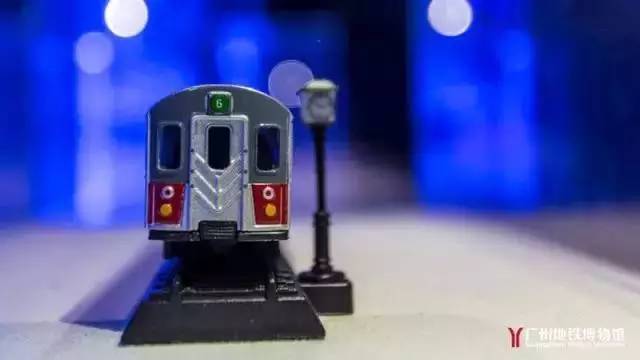
The exhibition area is located on three floors. The basement floor shows the geological condition in Guangzhou and the construction process of Guangzhou Metro. The first floor displays the development history of rail transit and Guangzhou metro. Between the basement and first floors, a shield tunneling machine of one-to-one scale is inlaid. Visitors can go into the machine to play games or watch videos to find out how the machine works.

The second floor is experience area for metro operation safety. Visitors can learn about the development history of Guangzhou metro through VR devices. Once you wear the VR helmet, you will find yourself in a time gallery, walking through the development of Line one to Line 13.
At this floor, there is a high-quality metro train model of dozens of meters long with four carriages. The first carriage is a simulated cab where participants can experience how to operate and stop the metro train.
In the second carriage, participants can slide the screen on the wall to scan the train body, so as to learn about how the train runs.
In the third carriage, visitors can get to know about the metro signal system, play the part of metro signal engineer, and learn to write signal system instruction to make sure the train arrives at the terminal safely.
The fourth carriage is an emergency exercise site where participants can learn how to cope with emergency and save oneself.
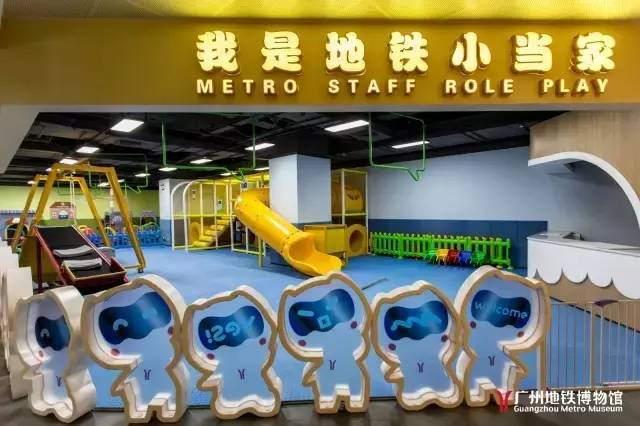
On the second floor, visitors can also find a “metro staff role play” area for children. They can also make emoji images.
There is a shopping mall next to the museum where you can find clothing stores, IMAX cinemas, supermarkets and restaurants. Before or after visiting the museum, you can go to the shopping mall for entertainment and receive discounts as well.

Admission: Free. On-line reservation is needed. Please follow the official WeChat account of Guangzhou Metro Museum (广州地铁博物馆) and make a reservation.
Add.: Tower C, Podium, Wansheng Square, No. 1228 Xingang East Road, Haizhu District, Guangzhou (广州市海珠区新港东路1228号万胜广场C塔裙楼)
Opening hours: 10:00 am to 4:00 pm, Tuesday to Friday (tickets won’t be distributed after 3:00 pm); 9:00 am to 5:00 pm, Saturday and Sunday ((tickets won’t be distributed after 4:00 pm)
Nearby metro station: Exit A, Wanshengwei Station, Line 4 or 8
(By Monica)

















